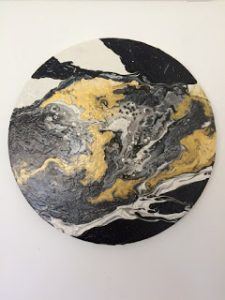Sabine Hossenfelder in Back Reaction:
 Stephen Hawking sadly passed away earlier this year, but his scientific legacy is well alive. The black hole information loss problem in particular still keeps physicists up at night. A new experiment might bring us a step closer to solving it.
Stephen Hawking sadly passed away earlier this year, but his scientific legacy is well alive. The black hole information loss problem in particular still keeps physicists up at night. A new experiment might bring us a step closer to solving it.
Hawking notably was first to derive that black holes are not entirely black, but must emit what is now called “Hawking radiation”. The temperature of this radiation is inversely proportional to the mass of the black hole, a relation that has not been experimentally confirmed, so far.
Since the known black holes out there in the universe are very massive, their temperature is too small to be measurable. For this reason, physicists have begun to test Hawking’s predictions by simulating black holes in the laboratory using superfluids, that are fluids at a few degrees above absolute zero which have almost no viscosity. If a superfluid has regions where it flows faster than the speed of sound in the fluid, then sound waves cannot escape the fast-flowing part of the fluid. This is similar to how light cannot escape from a black hole.
The resemblance between the two cases more than just a verbal analogy, as was shown first by Bill Unruh in the 1980s: The mathematics of the two situations is identical. Therefore, physicists should be able to use the superfluid to measure the properties of the radiation predicted by Hawking because his calculation applies for these fluids too.
More here.
